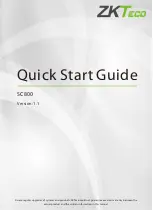
Chapter 4
Theory of Operation
©
National Instruments Corporation
4-11
DAQCard-1200 User Manual
range of 0 to +10 V. A bipolar output gives an output voltage range of ±5 V.
For unipolar output, 0 V output corresponds to a digital code word of 0. For
bipolar output,
–
5 V output corresponds to a digital code word of F800 hex.
One least significant bit (LSB) is the voltage increment corresponding to an
LSB change in the digital code word. For both outputs:
Power-On State
Both analog outputs reach 0 V approximately 110 ms after card insertion.
During this 110 ms period, the output voltage can swing from +2 to
–
5 V.
Caution
Disconnect the analog outputs from the system before inserting the card in the
PC Card slot. This step ensures that you do not damage the system during the 110 ms
before the output reaches 0 V.
DAC Timing
There are two ways you can update the DAC voltages. In the first mode,
the DAC output voltage is updated as soon as you write to the
corresponding DAC. This mode is called the immediate update mode. In
the second mode, the DAC output voltage does not change until a low level
is detected either from counter A2 of the timing circuitry or from
EXTUPDATE*. This mode is useful for waveform generation. These
two modes are software-selectable.
Note
Configure both DACs in either immediate update mode or later update mode. Do not
configure the DACs in a combination of both modes because doing so can result in
premature updates on the waveform generation DAC (whenever the immediate update
DAC is updated). Also, if a waveform generation update occurs between an LSB write and
an MSB write of the DAC in the immediate update mode, you receive an incorrect value
from that DAC until the MSB is written. Both of these effects are minimal at high
waveform update rates.
Note
Delayed update mode is selected by NI-DAQ when a timed, or buffered,
AO operation is configured.
1
LSB
10
4096
------------
V
=
Содержание DAQPad-1200
Страница 1: ...DAQPad 1200...
















































